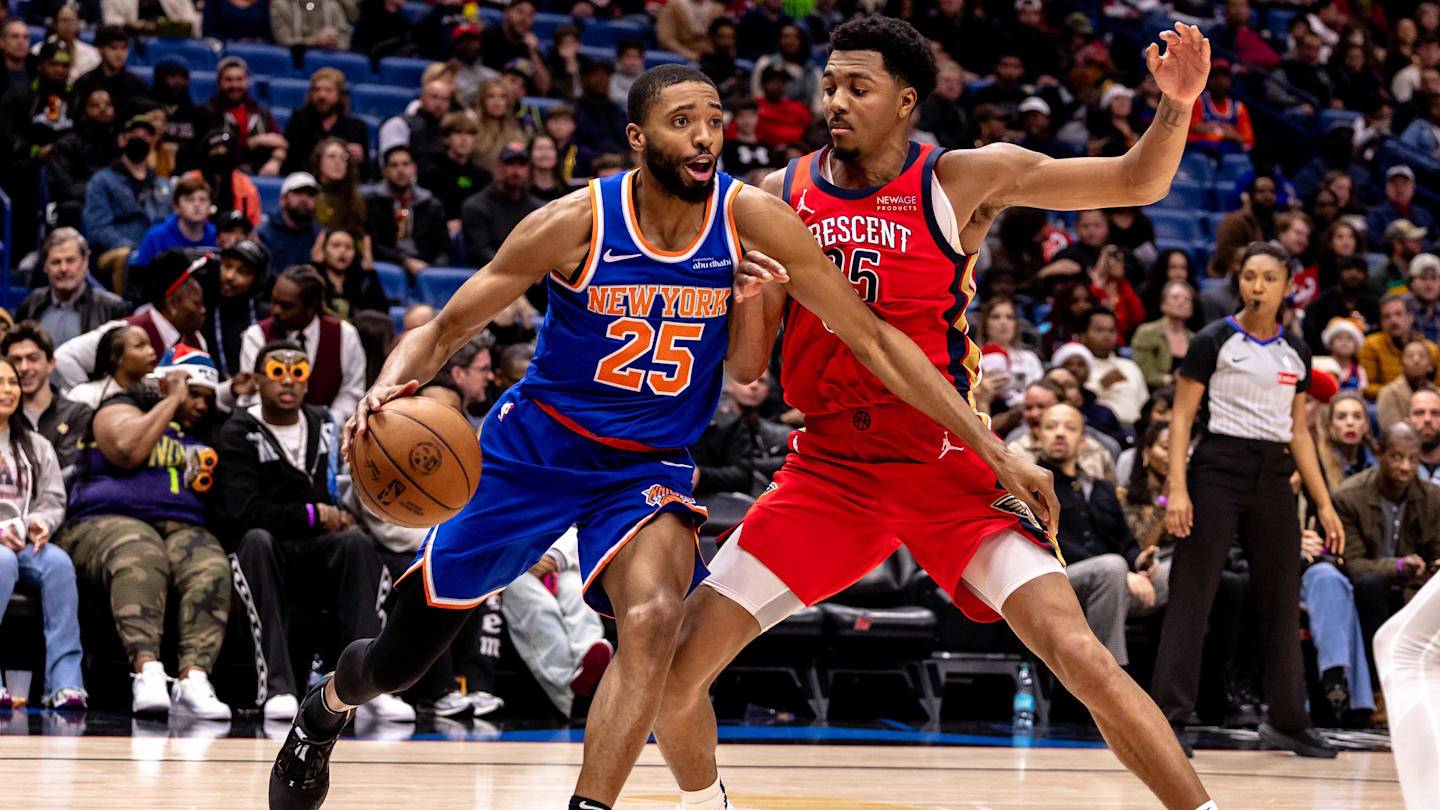Tennis
Rafael Nadal retires from tennis after 20 years of preparing his body to ‘die on the court’

For two decades, whatever outrageous fortune controls tennis injuries kept slinging arrows at Rafael Nadal.
When the Spaniard finally raised his white flag last month, he admitted defeat to an opponent he had vanquished not just in his later years but for two decades, until he couldn’t win the battle any more.
Nadal described being physically prepared for a match or a tournament as being ready to “die on the court”. In a tennis sense, that is basically what he did, throwing his body into every shot until there were no more shots left to make from the moment he burst onto the scene 20 years ago.
As his final match loomed, Nadal said he was as healthy and rested as he could have been. Spain’s captain, David Ferrer, had no reason not to play him. “I have nothing, nor an injury, nothing important to say I’m not ready to play,” Nadal said after his final loss to Botic Van de Zandschulp.
Nothing other than 20 years of miles that had left him slowed and weakened. “It’s about the things I went through,” he said of his decision to retire in a news conference before his final bow at the Davis Cup in Malaga, Spain.
“I don’t have the chance to be competitive the way I like to be competitive. My body is not able to give me the possibility,” he said. Nadal tried to find that possibility, in 16 matches across four months on the clay he made his own for those 20 years, but as he said in the Spanish portion of his news conference, tennis does not give ideal endings to even its most garlanded heroes.
“They are in American movies,” Nadal said.
The truism hides the more remarkable truth: All this could have ended so much earlier. A spate of injuries that started with a cracked rib at Indian Wells in 2022 has felled him, but that issue came 18 years after the one that nearly derailed Nadal’s tennis career when it was just getting going — and would define it from beginning to end.
That foot, always. That damn foot.
GO DEEPER
Tennis plays to no clock, but Rafael Nadal knew it was time
Nadal was 18 when doctors told him he had a big problem with a small bone in his left foot. They spent months trying to diagnose pain that grew serious in October 2005, after he won the Madrid Open against Ivan Ljubicic. Nadal took two weeks off. When he tried to play again, the pain returned and the detective work continued.
In 2004, Nadal had missed the French Open with what was diagnosed as a stress fracture in his ankle. It also prevented him playing at Wimbledon and in that summer’s Olympics.
A year and a half later, doctors discovered Nadal had Muller-Weiss syndrome in that foot: a rare, congenital condition where the navicular bone, which connects the ankle joint to the bones of the foot, begins to collapse and fragment. In Nadal’s case, the bridge of his foot above the instep never ossified (formed properly, with the cartilage turning to bone as a person ages), weakening the foundation of his kinetic chain and making him vulnerable to other lower-body injuries, especially in an intense stop-and-start sport such as tennis.

Rafael Nadal’s left foot would define his career as much as his strokes and titles. (Christiane Poujoulat / AFP via Getty Images)
One of the world’s leading authorities on the condition told Nadal he might have to retire. Nadal’s father, Sebastian suggested golf.
Nadal was devastated. “I felt like my life was cut in half,” he wrote in his autobiography. He moped around his family’s home in Mallorca for weeks. His uncle Toni, his longtime coach, coaxed him to hit balls while sat in a chair in the middle of the court. Only a customized shoe with a crafted sole allowed him to play again by shifting the force of his landings onto the stronger bones elsewhere in that foot.
But what fixed him would also help break him.
How Rafael Nadal will leave tennis
That shoe also caused subtle changes in Nadal’s movement, adding strain to his knees and back. Those new complications, combined with arguably the most physical and relentless approach to tennis that the sport has ever known, suggested a career that would shine brightly but briefly. As powerful as he looked in his sleeveless shirts and tight-fitting shorts, his bones were brittle. Even Nadal thought he’d be lucky to last in the game until his 30th birthday.
In the end, he went eight years beyond that milestone, but his body could withstand only so much punishment.
During the next two decades, Nadal would miss more than a dozen Grand Slam events through injury and withdraw from two more. In the same period, Novak Djokovic sat out only three, and two of those were because he refused to get vaccinated against Covid-19.
Nadal’s Grand Slam career spanned 83 majors. He missed 14 because of injuries and won 22 of the 69 he played. Djokovic has played 76, missed three and won 24 times.

An abdominal injury kept Nadal out of the 2022 Wimbledon semifinal. (Clive Brunskill / Getty Images)
Tennis started to count Nadal out as early as 2009.
After losing to Robin Soderling at Roland Garros — the first of his four defeats in Paris — he played an exhibition match against Stan Wawrinka. Partway through, he told his uncle he couldn’t bend over to pick up a ball. With six major titles on his mantle, he pulled out of Wimbledon, citing patellar tendinitis in his knee. It could have been the end, according to a sports scientist who told UK newspaper The Guardian that Nadal, then 23, likely had the knees of a 33-year-old.

GO DEEPER
What’s it like to play Rafael Nadal on clay? We asked the players
After a shock defeat to Lukas Rosol at Wimbledon, he spent the rest of 2012 rehabilitating a torn tendon in his left knee. For the next 12 years, his career would become an exercise in match management, especially on the hard courts which stressed his joints the most. His left shoulder began to ache. That damn foot throbbed on. The injuries were climbing up and down his body.
Then the other end of his kinetic chain snapped, a wrist injury forcing him to pull out of the 2016 French Open after two wins out of two. Bad wrists can doom careers. Players can adjust their styles to continue with balky knees but it’s nearly impossible to hit a tennis ball properly with a bum wrist, especially one that has spent a lifetime whipping shots with more topspin than anyone thought possible. Nevertheless, Nadal persisted.
“He’s the strongest player I’ve seen mentally, and I’m not only talking about tennis, I mean all sports,” his good friend and Davis Cup teammate Feliciano Lopez said in an interview in October. He puts Nadal in the upper echelon of athletes who overcame setbacks and layoffs, including Michael Jordan and Tiger Woods. Nadal was in the tennis upper echelon with Federer and, more tellingly for his body, Djokovic, who led a total reimagination of tennis movement with his hard-court slides and ludicrous dexterity. He could get back more balls and he could get back from getting them back quicker. That meant Nadal had to do the same.
Still he carried on, winning eight more Grand Slams.
More than 20 years after he started playing professional matches at 14 years old, Nadal was sprinting across the baseline for a forehand at the 2023 Australian Open in a second-round match against Mackenzie McDonald of the United States. Nadal pulled up with a start, as though that outrageous fortune had shot an arrow through his left hip. He slowed, bent over and glared up at his team watching from their box like he knew this was the end.
He hobbled through another set, largely playing standing still, forcing McDonald to beat him instead of quitting.

Rafael Nadal’s body eventually left him a shadow of his former self. (Tim Clayton / Corbis via Getty Images)
Like the injuries that crawled up from his foot, the crack in his hip likely came from an accumulation of cuts in 2022. He cracked that rib in Indian Wells against Carlos Alcaraz and won anyway. He numbed his left foot before each match at the French Open in the spring, and left Paris on crutches with the trophy. He tore an abdominal muscle during his quarterfinal against Taylor Fritz at Wimbledon and won the match anyway — but then had to default ahead of his semifinal against Nick Kyrgios. He lost to Frances Tiafoe in New York but then he broke against McDonald in Melbourne.
For five months he resisted surgery, before accepting the inevitable. He returned this year a shadow of his former self, for those 16 matches on red clay that were the barometer he needed to know that his time was up. He struggled to cover the court. He could no longer torque his body into the corkscrewing serve he had developed from a weakness into something like a weapon.
In Madrid, he likened his body the previous two years to a jungle.
“I woke up one day and found a snake biting me — another day, a tiger,” he said in a news conference.
He was talking about 24 months. Or maybe 20 years.
(Top photos: Getty Images; design: Dan Goldfarb)










